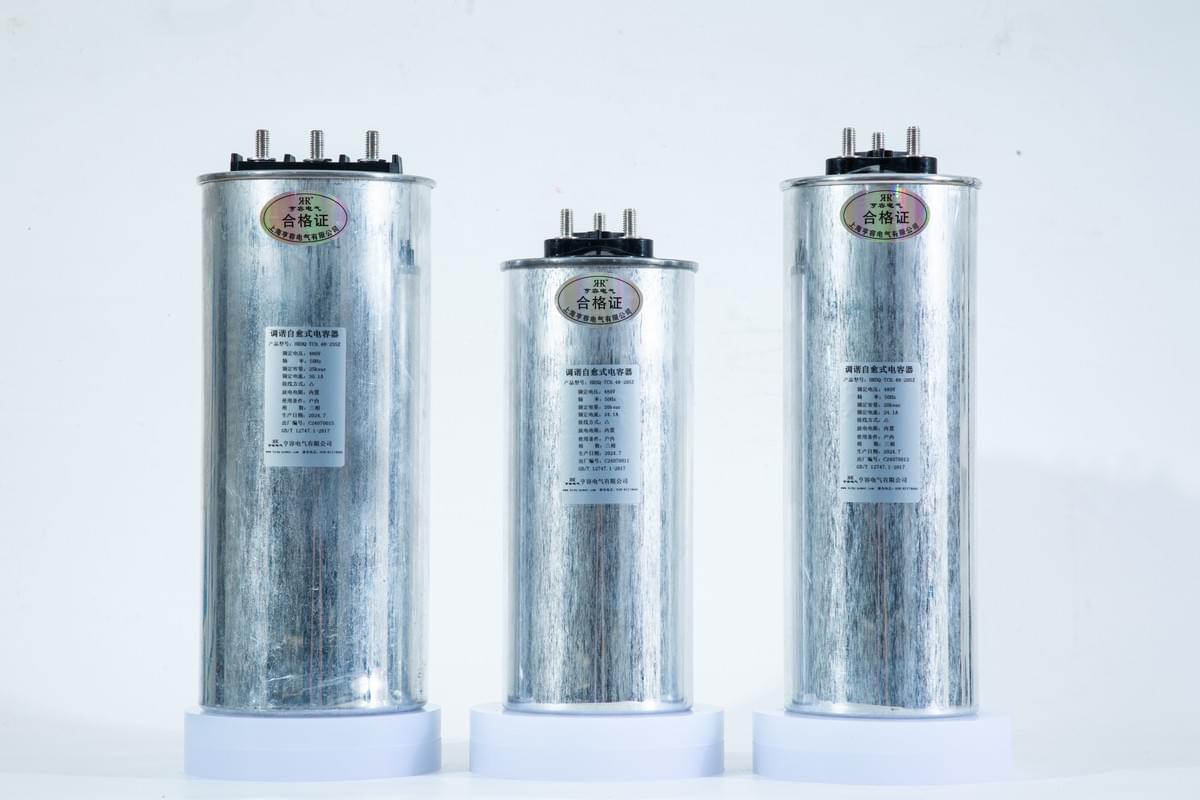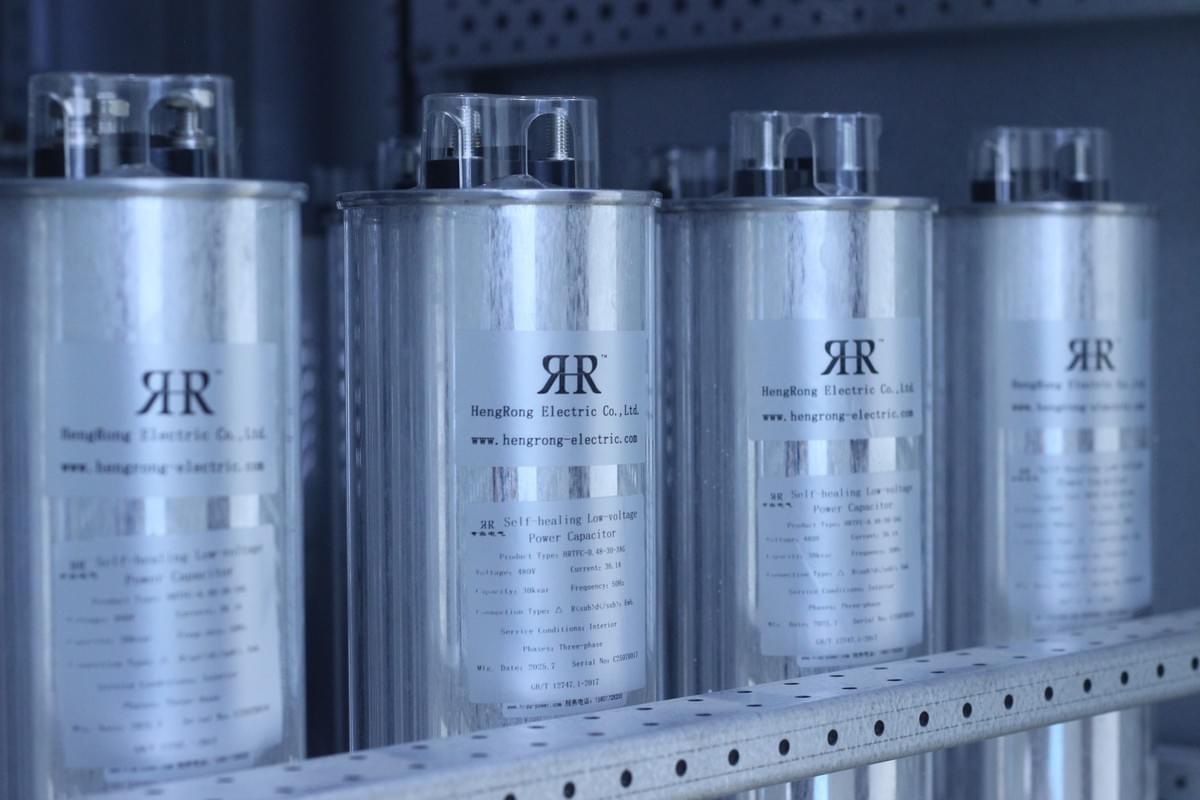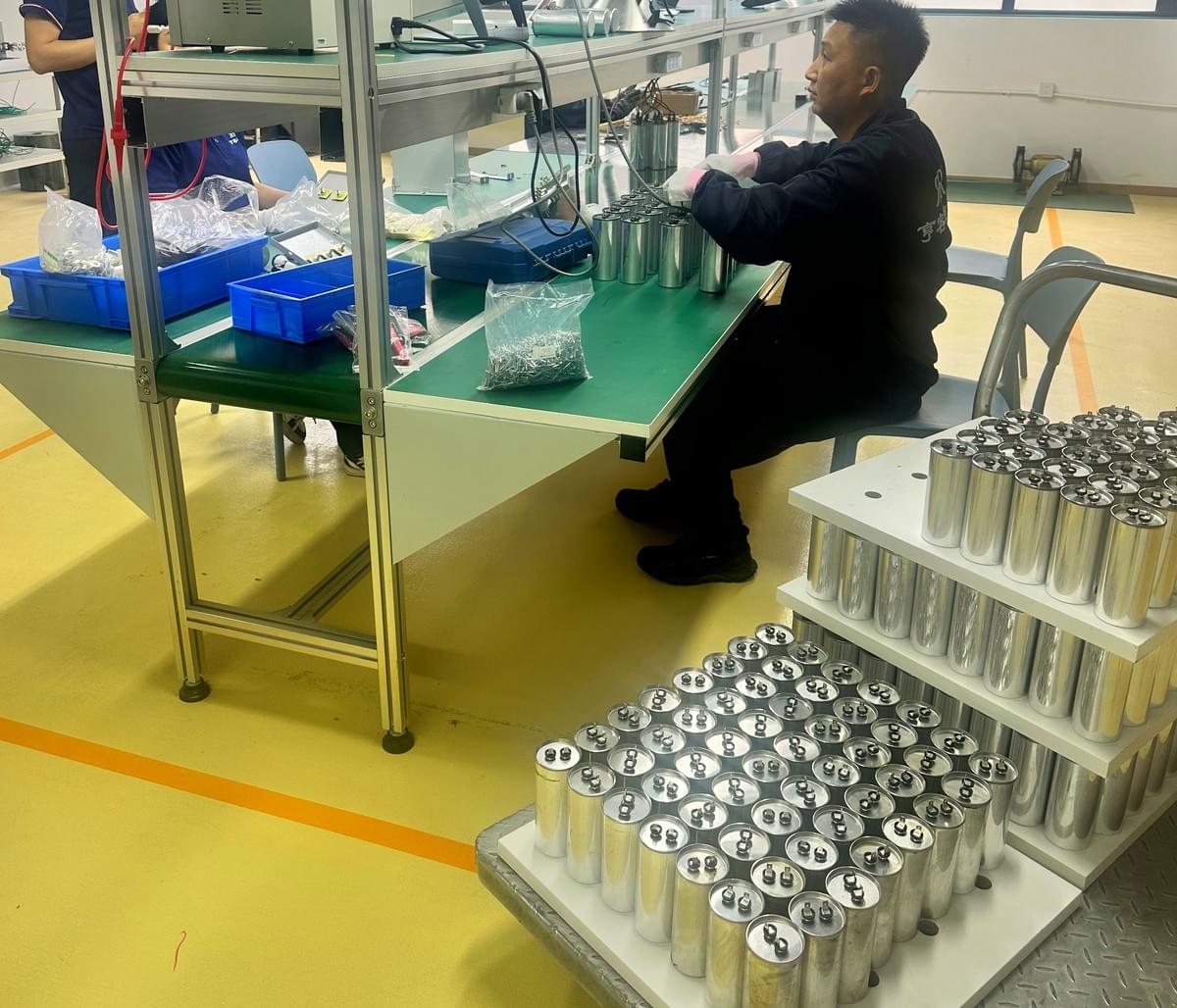In the operation of power supply enterprises, line loss rate and power quality are core indicators that directly affect corporate profits and user experience. Currently, in rural and urban small-industry low-voltage distribution networks, the proportion of inductive loads (such as air conditioners and motors) exceeds 60%, leading to persistently low power factors (0.75-0.85) and high line loss rates (over 8%). Particularly during peak load periods, the terminal voltage often drops below 198V (for 220V user terminals), causing issues like motor stalling and frequent household appliance shutdowns, resulting in high user complaint rates. Low-voltage capacitors, with their distinct advantages of compact size (wall-mounted modules occupy only 0.2 m²), cost-effectiveness (a single 20kvar unit costs approximately 800 RMB), and easy installation (no need to modify existing lines), adopt an "on-site compensation" model to directly supply reactive power at the load end. This fundamentally reduces transmission losses, making them a "low-cost and high-efficiency solution" for distribution network optimization. This article comprehensively explains their core value and implementation methods from four aspects: comparison of capacitor compensation methods, practical application effects, analysis of adapted scenarios, and key points for capacitor selection and maintenance.

I. Core Differences Between Two Capacitor Compensation Methods
Reactive power compensation in low-voltage distribution networks is centered on capacitors, mainly divided into two types with significant differences in applicable scenarios and effects:
1. Centralized Capacitor Compensation on the Load Side of Distribution Transformers
It uses cabinet-type capacitor banks (single bank capacity: 100-300kvar) installed on the low-voltage bus of distribution transformers, paired with automatic power factor controllers that switch capacity based on the bus power factor (set threshold: 0.85-0.9). This method is only suitable for distribution areas with highly concentrated loads (e.g., workshop clusters in large industrial parks) and short low-voltage lines (≤ 300 meters), with prominent limitations: line loss optimization only reduces the rate by 0.5-1 percentage point and fails to improve losses in low-voltage lines from transformers to load ends; since it collects voltage data from the head end, it is difficult to detect terminal fluctuations, leaving equipment vulnerable to insufficient voltage during peak periods; the power factor at the load end only maintains 0.8-0.85, forcing industrial users to continuously pay power factor adjustment fines (a 5% fine of the total electricity fee when the power factor is 0.8).
2. Low-Voltage Capacitor On-Site Compensation
Modular capacitors (5-50kvar) are directly installed at the load end (e.g., in farmers' distribution boxes, next to workshop motors, or inside pump station control cabinets) and connected in parallel with loads. Taking a 100kVA distribution transformer, a 10kW three-phase asynchronous motor 100 meters away (line cross-section: 50mm²) as an example: after compensation, the line current drops from 18A to 14A, line loss decreases from 120W to 75W (a 37.5% reduction); the terminal voltage rises from 198V to 202V, stably meeting national standards; the power factor at the load end exceeds 0.95, enabling exemption from fines and even a 1% electricity fee reward in some regions. It is the optimal choice for scenarios with long lines and scattered loads.

II. Practical Application Effects of Low-Voltage Capacitor On-Site Compensation
Taking the pilot project of Wujiang Power Supply Company in Jiangsu Province as an example, two typical distribution areas were selected to install PBJ-0.4-20-3 intelligent low-voltage capacitors (single unit: 20kvar, supporting dual-parameter linkage control of power factor and voltage, response time ≤ 100ms). After 6 months of stable operation, remarkable results were achieved:
- Shuangshigang 3H Distribution Area (100kVA transformer, 0.75km line, loads: farmland irrigation pumps + residential electricity): 8 capacitors with a total capacity of 160kvar were deployed. The line loss rate decreased from 8.56% to 7.21%, monthly electricity savings reached 1125kWh, and the terminal voltage increased by 8-10V.
- Genglou No.3 Distribution Area (500kVA transformer, 1.0km line, loads: small machinery factories + residential electricity): 10 capacitors with a total capacity of 200kvar were installed. The line loss rate dropped from 9.12% to 6.58%, monthly electricity savings reached 2117kWh, and the terminal voltage increased by 10-12V.
Overall, the two distribution areas achieved a total annual electricity savings of 38,900kWh. Calculated based on the weighted average of residential and industrial electricity prices (residential: 0.52 RMB/kWh, industrial: 0.9 RMB/kWh), the annual electricity cost savings were approximately 18,000 RMB. The total investment in capacitors was 14,400 RMB (18 units × 800 RMB), with an investment payback period of only 10 months—far exceeding the industry average of 1.5-2 years. Meanwhile, the active power output of the 500kVA transformer increased from 400kW to 450kW, meeting the load demand of 2 newly added 25kW plastic granulators without capacity expansion, saving 120,000 RMB in distribution network upgrade costs. User feedback was positive: "With the capacitor installed, the irrigation pump starts immediately without waiting for off-peak hours" and "Monthly electricity costs are reduced by 3,000 RMB—this small device is really worthwhile."

III. Capacitor-Adapted Scenarios (Investment Payback Period ≤ 1 Year)
- Farmland Irrigation / Aquaculture Aeration Pumps: Equipment includes 10-50kW motors (power factor: 0.7-0.8) with long lines (0.5-3km) and concentrated operation time (8-12 hours/day). Select IP65 waterproof and dustproof capacitors (to resist field rain and dust), configured as 40%-50% of the motor power, reducing line loss by 30%-40%.
- Small-Industry Concentrated Distribution Areas: Food processing plants, machinery factories, etc., have inductive loads accounting for over 70% of total loads, often with three-phase imbalance. Choose phase-separated compensation capacitors to independently adjust the capacity of each phase, increasing the power factor to over 0.92 and saving 3,000 RMB monthly (for enterprises with a monthly electricity bill of 50,000 RMB).
- Old Residential Communities: Each household has an inductive load of 2-3kW, with voltage fluctuations of 190-230V during evening peak hours. Equip with intelligent combined capacitors (1kvar per household) to stabilize the voltage at 210-225V, reducing the line loss rate from 10% to below 7% during evening peaks.
- Long-Distance Lines (> 0.8km): Line reconstruction costs are high in mountainous areas and remote scenic spots (approximately 30,000 RMB per km). Install capacitors in segments, with costs only 1/3-1/2 of reconstruction fees, reducing line loss by over 20%.
- Local Low-Voltage Areas: When the voltage is below 198V (220V) or 360V (380V), capacitor installation can be completed in 1-2 days (live-line work without affecting electricity use), increasing the voltage by 10-15V at a cost far lower than line reconstruction.
IV. Capacitor Selection and Installation Maintenance
1. Key Selection Points
- Capacity Calculation: Calculate as "load active power × (tangent value of phase angle corresponding to pre-compensation power factor - tangent value of phase angle corresponding to target power factor)". For example, for a 10kW motor (pre-compensation power factor: 0.8, target power factor: 0.95), the corresponding tangent values are 0.75 and 0.329 respectively, requiring a capacity of approximately 4.21kvar. In practice, select a standard 5kvar capacitor.
- Type Selection: For balanced three-phase loads (e.g., industrial motors), choose three-phase common compensation type; for unbalanced loads (e.g., residential electricity), select phase-separated compensation type; for humid environments (e.g., aquaculture), choose IP65 protection level; for indoor use (e.g., distribution rooms), IP44 is sufficient; for fluctuating loads (e.g., air conditioners, machine tools), prioritize intelligent dual-parameter control type.
2. Installation and Maintenance Specifications
- Installation: Deploy capacitors close to the load, reserve ≥ 10cm ventilation space (operating temperature ≤ 40℃ to avoid overheating and shortened service life). Strictly use parallel wiring, connect three-phase capacitors in phase sequence, and connect fuses (rated current: 1.2-1.5 times the capacitor's rated current) and discharge resistors (voltage drops to ≤ 50V within 5 minutes after power failure) in series.
- Daily Maintenance: Inspect the capacitor appearance monthly (no bulging, oil leakage, or discoloration); test insulation with an insulation resistance meter quarterly (insulation value ≥ 10MΩ, replace if below 5MΩ). The service life is 5-8 years; replace in time when expired to avoid reduced compensation effect due to capacitance attenuation.
Conclusion
Low-voltage capacitor on-site compensation, with its core advantages of "flexible adaptation, cost control, and rapid return", is the preferred solution for reducing distribution network losses and improving quality. Whether in rural irrigation, industrial production, or residential electricity scenarios, as long as capacitors are accurately selected and scientifically deployed based on load characteristics, the dual goals of "loss reduction, energy conservation, and cost efficiency" can be effectively achieved.

If you need a customized capacitor compensation solution, please leave a message about your distribution network capacity, relevant parameters, and actual pain points. Hengrong Electric Co.,Ltd will provide free selection and installation design services!
